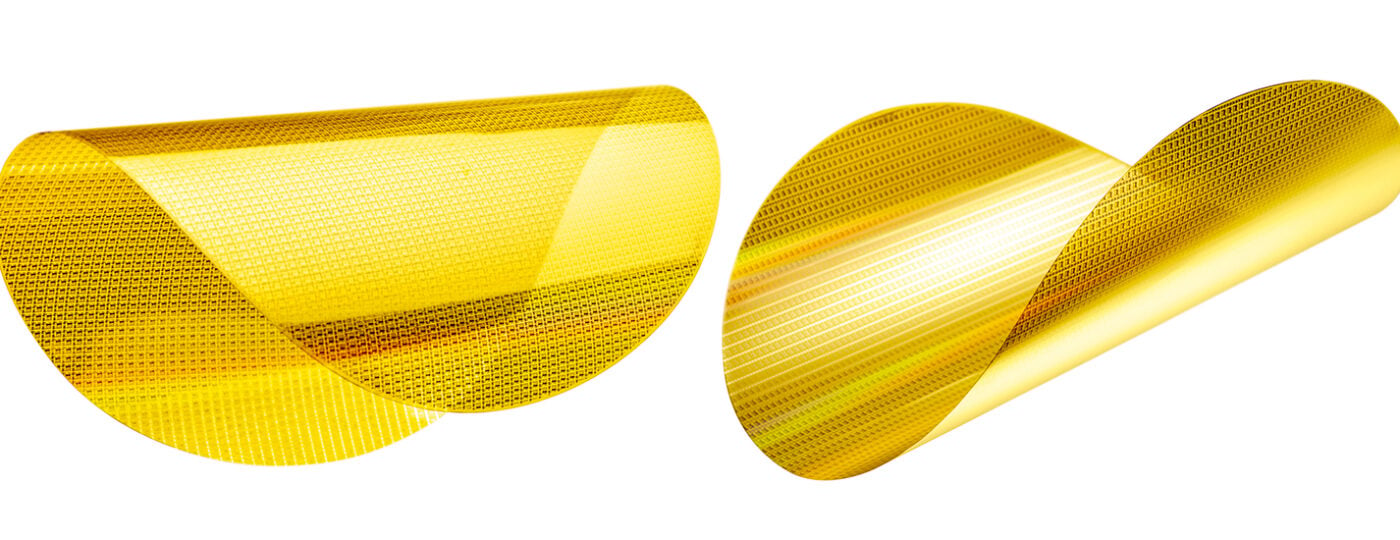
Flexible ICs
A flexible alternative to silicon
FlexICs – flexible integrated circuits – make it quick and easy to embed intelligence almost anywhere. Ultra-thin and highly cost-effective, they enable novel solutions that are simply not possible with conventional silicon semiconductors.
Perfect for bringing intelligence to low-cost items as part of the Internet of Things (IoT), FlexICs excel in applications such as smart packaging, recycling and reuse, traceability and product authentication.
FAQs
FlexICs are a low-cost, flexible alternative to traditional, silicon-based microchips.
FlexICs are around 30 microns thick – thinner than a human hair – so sit comfortably within any standard RFID inlay and label.
FlexICs are ideal for use where it would not be cost-effective—or even possible—to use silicon. As the name suggests, they’re physically flexible, so they can be used where silicon chips can’t, such as on curved or domed surfaces. And while silicon chip development can take months – if not years – FlexICs’ rapid development and production cycles can take new designs from concept to delivery in just weeks.
FlexICs are perfect for bringing intelligence to low-cost items as part of the Internet of Things (IoT) or anywhere ‘tiny technology’ is needed. While they’re not a replacement for powerful, cutting-edge chips, they’re ideal as an alternative to the so-called ‘legacy’ chips that are found everywhere from consumer electronics to medical devices and smart spaces. Just like silicon, FlexICs can be embedded within a product, or used as part of an RFID label, for example.
FlexIC production uses around 100 times less energy and significantly less water than silicon microchips, and significantly fewer harmful chemicals. It also uses just one greenhouse gas, carbon tetrafluoride (CF4), in tiny quantities, equivalent to 0.00000117g CO2 per FlexIC. This naturally results in a significantly lower carbon footprint.
FlexICs are significantly more cost-effective than traditional RFID solutions, allowing you to bring intelligence to a wider range of packaging. And FlexIC-enabled tags can be read quickly and easily (in less than 5ms) – in any orientation or without a clear line of sight – enabling high levels of automation and system scalability.
Have a question about FlexICs?
Get in touch with our team




